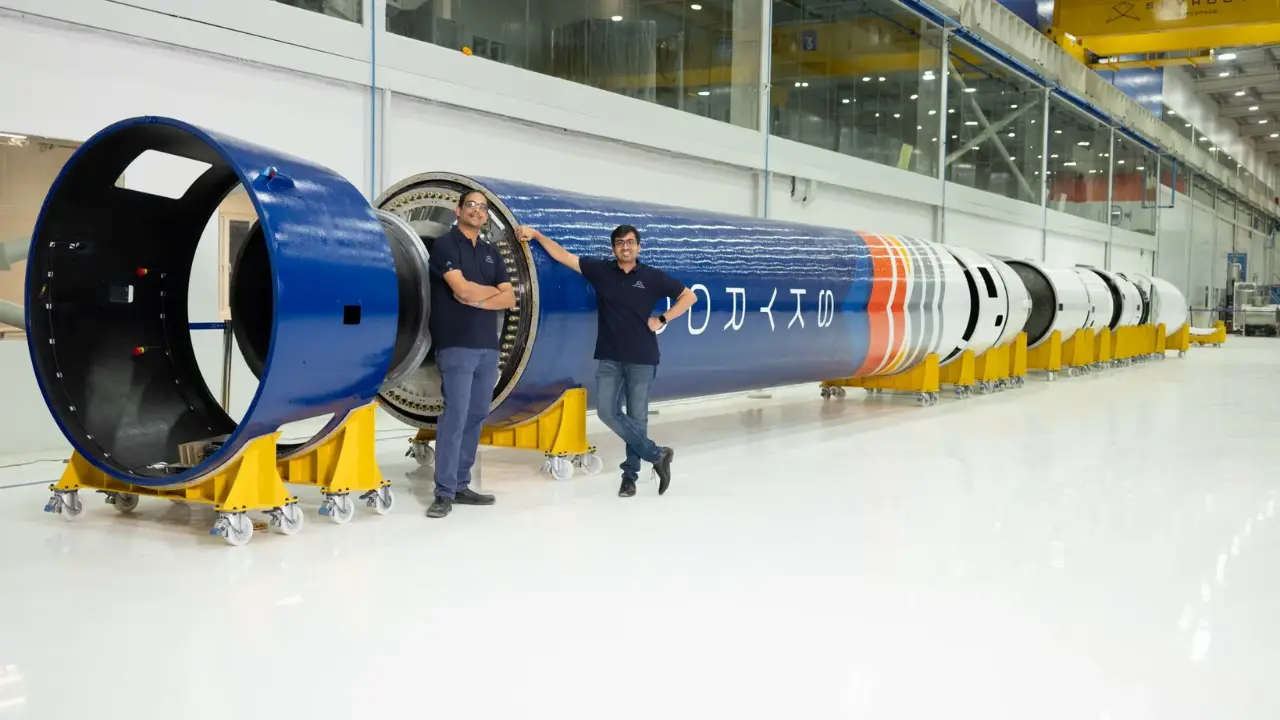A Pivotal Moment for India’s Space Sector
A momentous occasion unfolded in India’s space industry as Dr. Jitendra Singh, the Union Minister of Science and Technology, revealed Skyroot’s Vikram-1 orbital rocket in Hyderabad on Tuesday, October 24th. This unveiling signals a significant advancement in India’s space endeavors, with the prospect of achieving a fully commercial launch later in 2024. Pawan Kumar Chandana, co-founder and CEO of Skyroot, underscored the partly commercial nature of Vikram-1’s inaugural launch.
Vikram-1 Rocket: A Technological Wonder
Vikram-1, developed by Skyroot, is no ordinary rocket. It stands as a state-of-the-art, multi-stage launch vehicle with the capability to carry payloads of around 300 kilograms to Low Earth Orbit. What sets it apart is its construction, made entirely of carbon fiber and equipped with 3D printed liquid engines.
Vikram-1 Rocket: Elevating India’s Satellite Deployment Abilities
Vikram-1 aims to achieve something remarkable for India – the ability to deploy multiple satellites into orbit, a first for the country and a rarity on a global scale. This rocket represents the second successful project for Skyroot, building on the accomplishments of the Vikram-S rocket, which had a triumphant launch on November 18th, 2022. Essentially, Vikram-1 can be seen as an upgraded version of its predecessor.
Launch Plans and Timetable
While Chandana did not disclose the exact launch month, he did confirm that the first comprehensive developmental test launch of Vikram-1 is anticipated in early 2024. A full-fledged commercial launch is expected later in 2024. This timeline is of utmost importance, given the evolving competitive landscape for satellite launches, with new players likely to enter the field, both on a global and local scale, in 2024.
Financial Support for Skyroot
Skyroot has successfully secured approximately Rs 526 crore in funding. Chandana is confident that this financial backing will support the company through its next several launches, particularly since they secured a substantial amount of Rs 400 crore just a year ago. This financial stability is crucial as it enables Skyroot to continue its ambitious plans and maintain its position as a pioneering private space launch provider.
The Future of India’s Space Economy
Dr. Jitendra Singh, the Union Minister of Science and Technology, expressed his optimism for the growth of India’s space economy. He referred to estimates projecting the industry’s growth from the current $8 million to possibly $40 million by 2040, with some even suggesting it could reach $100 million by that time. This anticipated growth underscores the importance of India’s efforts in space technology and commercial space ventures.
Skyroot’s MAX-Q: An Advanced Headquarters
Dr. Singh also inaugurated Skyroot Aerospace’s new global headquarters in Hyderabad, named MAX-Q. This facility is described as “the country’s largest private rocket development facility under a single roof.” MAX-Q is equipped with cutting-edge infrastructure, housing integrated design, manufacturing, and testing facilities for space launch vehicles.
MAX-Q Headquarters: A Hub for Innovation and Expansion
The facility can accommodate Skyroot’s 300-strong workforce and encompasses a substantial 60,000 square feet of built-up area, with future expansion plans in the pipeline. The headquarters embraces a futuristic space theme, symbolizing Skyroot’s commitment to pushing the boundaries of space technology.
Conclusion: Vikram-1 Rocket
Skyroot’s Vikram-1 rocket and the MAX-Q headquarters signify India’s burgeoning presence in the global space industry. With ambitious plans, technological innovations, and a dedication to innovation, India is poised to achieve new milestones in the realm of space exploration.
- JAIIB RBWM Preparation Strategy 2026, Important Topics, Study Tips
- JAIIB AFM Preparation Strategy 2026, AFM Important Topics & Study Tips
- JAIIB IE&IFS Preparation Strategy 2026, Study Plan for 45 Days
- JAIIB PPB Preparation 2026, Get JAIIB PPB Study Plan for 45 Days
- SEBI Grade A Exam Analysis 2025-26, Difficulty, Good Attempts & Trends

Priti Palit, is an accomplished edtech writer with 4+ years of experience in Regulatory Exams and other multiple government exams. With a passion for education and a keen eye for detail, she has contributed significantly to the field of online learning. Priti’s expertise and dedication continue to empower aspiring individuals in their pursuit of success in government examinations.
